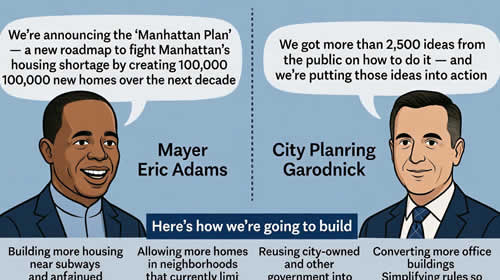Adolescence is marked by rapid physical development and emotional changes while youth work to develop autonomy and a sense of identity. This period is further complicated by child welfare involvement, which is often associated with changes in social support and placement. Youth who identify as lesbian, gay, bisexual, transgender, questioning, or another diverse identity (LGBTQ+) are overrepresented in the child welfare system and face several additional complex challenges beyond those typically associated with adolescence, including discrimination and threats to their physical and emotional wellbeing. It is therefore extremely important to understand how to strengthen protective factors and effectively work with this population. Resources on this page support child welfare workers serving this population, while subpages include resources for LGBTQ+ youth in out-of-home care and resources offering support and guidance for LGBTQ+ youth and their families.
- Advancing equality for LGBTQIA2S+ individuals
- Resources for LGBTQ+ youth in out-of-home care
- Resources for families of LGBTQ+ youth
- Working with LGBTQ+ families in adoption
- Working with LGBTQ+ youth and families: Behavioral health
2016 RISE Project Care Coordination Team Program Manual
U.S. Department of Health and Human Services, Administration for Children and Families, Children’s Bureau & Los Angeles LGBT Center (2016)
Discusses the RISE (Recognize Intervene Support Empower) initiative of the Los Angeles LGBT Center. The manual explains the historical background and lessons learned.
2016 RISE Project Outreach and Relationship Building Program Manual
U.S. Department of Health and Human Services, Administration for Children and Families, Children’s Bureau & Los Angeles LGBT Center (2016)
Explains lessons learned regarding program implementation in order to assist child welfare agencies to replicate or adapt the outreach and relationship-building component of RISE in local settings. Other volumes of the program manual provide training about social work practice for LGBTQ+ youth as well as supportive families and safe homes.
Advancing Healthy Outcomes: Eight Ways to Promote the Health and Well-Being of LGBTQ+ Youth Involved With Child Welfare Through FFPSA(opens in new window) (PDF – 4,649 KB)
Citrin & Martin (2019)
Center for the Study of Social Policy
Outlines eight specific strategies that can be implemented in light of the Family First Prevention Services Act to address disproportionalities and disparities for LGBTQ+ children and families in the child welfare system.
All Children – All Families: LGBTQ Resources for Child Welfare Professionals(opens in new window)
Human Rights Campaign
Offers resources for professionals pertaining to several aspects of providing services to LGBTQ+-identifying youth and families, including information about congregate care and the recruitment of LGBTQ+ families.
Ending Conversion Therapy in Child Welfare(opens in new window) (PDF – 22,200 KB)
National Center for Lesbian Rights (2018)
Offers a toolkit designed to assist State child welfare agencies in developing policies that explicitly state agency representatives, including employees and foster parents, cannot engage in any efforts to change the sexual orientation or gender identity of youth in their care, and that the agency cannot contract with providers who engage in such efforts.
Frequently Asked Questions From LGBTQ+ Prospective Foster and Adoptive Parents
Series Title
Factsheets for Families
Author(s)
Child Welfare Information Gateway
Availability
View
Download (PDF – 274KB)
Order (Free)
Year Published
2021
Addresses some of the concerns that LGBTQ+ (lesbian, gay, bisexual, transgender, questioning, and other diverse identities and expressions, including Two-Spirit) prospective foster and adoptive parents may encounter when deciding to foster or adopt a child or navigating the process. The landscape of parenting options for LGBTQ+ individuals and couples has grown considerably in recent years, with an increasing number of LGBTQ+ parents choosing to build their families through fostering or adoption. Although many agencies, both public and private, are welcoming to the LGBTQ+ community, LGBTQ+ foster and adoptive parents continue to face challenges related to adoption.
How Can Child Welfare Agencies Effectively Support LGBTQ+ Youth in Care?(opens in new window)
Annie E. Casey Foundation (2019)
Outlines the negative child welfare outcomes more common among LGBTQ+-identifying youth before presenting local programs designed to better support these youth in care.
Lesbian, Gay, Bisexual, Transgender, and Questioning (LGBTQ+)
Capacity Building Center for States
Helps States and territories build the capacity to more effectively serve and support LGBTQ+ youth and foster and adoptive families. Resources include publications, videos, and webinars.
- Creating LGBTQ Affirming Agencies Video and Guide
- Toolkit to Support Child Welfare Agencies in Serving LGBTQ Children, Youth, and Families
- Helping LGBTQ Families Navigate the Child Welfare System
- Supporting Transgender Children and Youth Involved in the Court System (PDF – 107 KB)
- Affirming and Supporting LGBTQ Children and Youth in Child Welfare (PDF – 236 KB)
- Guide and Instructions: Total Cost of Ownership Calculator for Child Welfare Information Systems (PDF – 567 KB)
Supporting LGBTQ+ Youth: A Guide for Foster Parents
Series Title
Factsheets for Families
Author(s)
Child Welfare Information Gateway
Availability
View
Download (PDF – 622KB)
Order (Free)
Disponibilidad
Ver
Versión para imprimir (PDF – 720KB)
Ordene (Gratis)
Year Published
2021
Provides information for foster parents to help them learn about LGBTQ+ (lesbian, gay, bisexual, transgender, questioning, and other diverse identities and expressions, including Two-Spirit) youth in the child welfare system, the unique risks they face, and the important role that foster parents can play in reducing those risks. The factsheet outlines specific actions that foster parents can take to create a welcoming and affirming home for all youth in their care and to promote a youth’s health and well-being, at home and in the community. Also included are links to many resources for more information and support.
Working With LGBTQ+ Families in Foster Care and Adoption
Series Title
Bulletins for Professionals
Author(s)
Child Welfare Information Gateway
Availability
View
Download (PDF – 396KB)
Order (Free)
Year Published
2021
Helps child welfare and adoption professionals expand their cultural competence and skills when working with and recruiting parents who identify as LGBTQ+ (lesbian, gay, bisexual, transgender, questioning, and other diverse identities and expressions, including Two-Spirit) and same-gender or gender-diverse couples. This bulletin includes information about challenges faced by LGBTQ+ foster and adoptive parents, suggestions for helping LGBTQ+ families navigate challenging systems, and resources for supporting transgender parents. It also examines laws and policies and provides tips for developing welcoming and affirming agencies to engage this vital community.
SOURCE – childwelfare.gov









